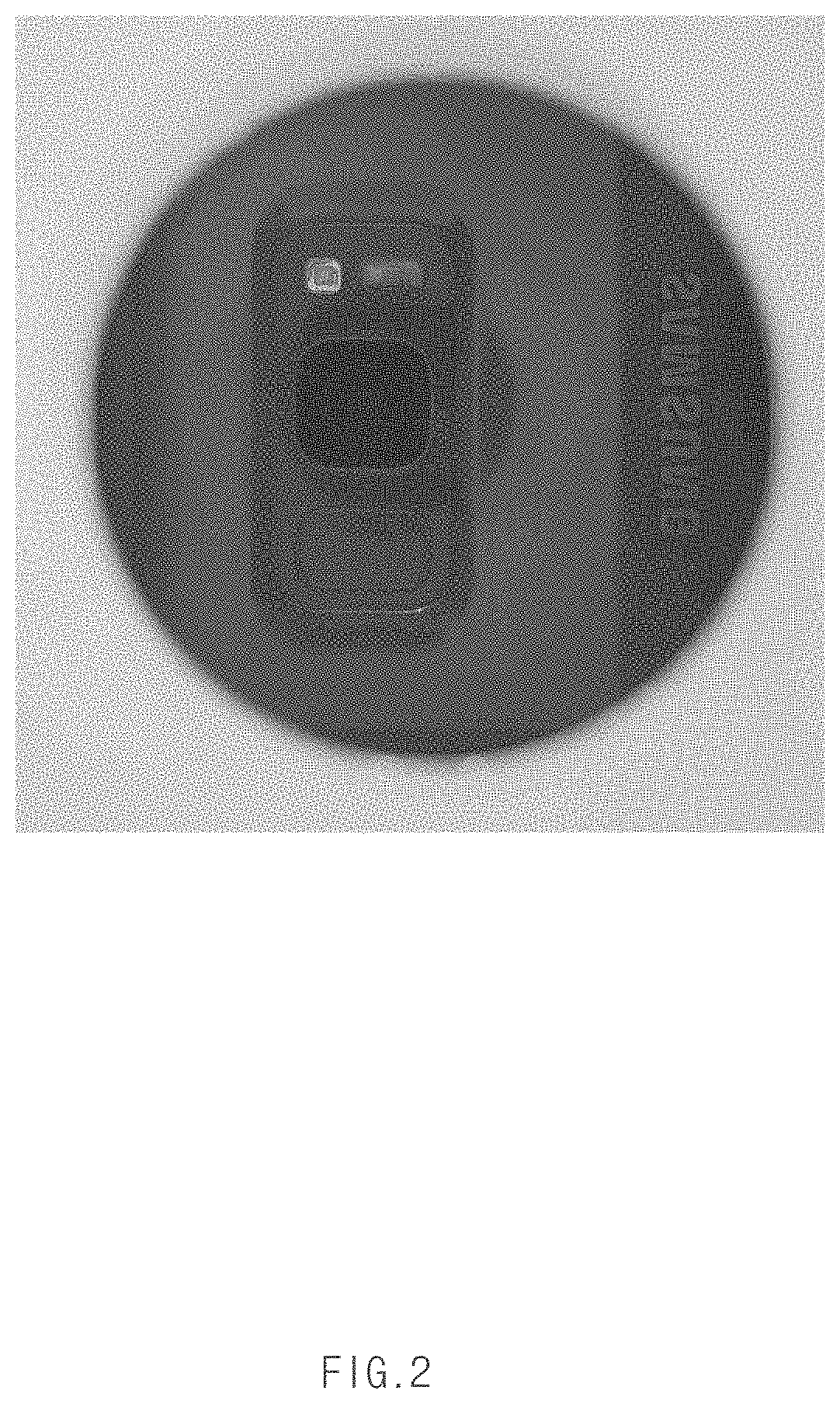Method for measuring radioactivity of radioactive waste
a radioactive waste and radioactivity technology, applied in the direction of instruments, nuclear engineering, x/gamma/cosmic radiation measurement, etc., can solve the problems of difficult separation of iodine in radioactive waste or pretreatment for chemical analysis, so as to improve the efficiency of radioactivity measurement and reduce the minimum detectable activity
- Summary
- Abstract
- Description
- Claims
- Application Information
AI Technical Summary
Benefits of technology
Problems solved by technology
Method used
Image
Examples
example 1
n and Electrochemical Desorption of Iodine Using Platinum Electrode
[0101]A platinum electrode with no iodine attached thereto was dipped in 0.1 M of NaClO4 aqueous solution as an adsorption member, and glassy carbon as a counter electrode and a Ag|AgCl electrode as a reference electrode were dipped therein to configure an electrochemical 3 electrode cell. A linear sweep voltammetry experiment was performed at a scanning speed of 50 mV / s from 0 V to −0.9 V or less in the cell. The platinum electrode was taken out of the electrochemical cell, and was immersed into excess water (100 mL) in which 0.001 mM of iodine compound of KI, I2, CH3I was dissolved, followed by stirring for 30 minutes. Thereafter, the platinum electrode was recovered and placed in the electrochemical cell to perform a linear sweep voltammetry experiment in the same environment. The results of the linear sweep voltammetry of the electrode in accordance with the adsorption of the iodine compound are shown in FIG. 4.
[...
example 2
n and Desorption of Iodine Using Adsorption Member in Sponge Shape
[0103]To excess water (100 mL) in which 0.001 mM iodine ions (I−) were dissolved, a platinum adsorption member in a sponge shape comprising a nickel substrate in a sponge shape with platinum coated thereon was added, followed by stirring for 30 minutes.
[0104]Thereafter, the platinum adsorption member in a sponge shape was recovered to construct an electrochemical system having the same as a working electrode as in Example 1. Then, a potential was applied to dissociate and recover iodine into a small amount of aqueous solution.
[0105]Using the platinum adsorption member in a sponge shape, adsorption / desorption of iodine was performed several times, and using absorption spectroscopy and ICP-MS measured thereby, the concentration of iodine was measured and is shown in FIG. 5. In addition, the concentration of iodide in an aqueous solution in accordance with the adsorption / desorption frequency is shown in Table 1 below.
TAB...
example 3
n of Iodine Using Platinum Plate Planchet and Radiation Measurement Using Low Energy Gamma Ray Meter
[0108]Radioactive iodine-129 was added in a small amount to a beaker having 50 ml of water, and 0.5 ml of sulfuric acid or nitric acid was added thereto. A platinum plate planchet (glass disc with platinum coated thereon) was placed in the beaker to adsorb radioactive iodine on the platinum plate planchet. Thereafter, the platinum plate planchet was recovered and washed with distilled water, and water was removed therefrom. Thereafter, the platinum plate planchet from which water was removed was disposed in a low energy gamma ray meter to measure radioactivity, and after the radioactivity measurement, an electrochemical device comprising a three electrode system having the platinum plate planchet as a working electrode, a glassy carbon as a counter electrode, and Ag|AgCl as a reference electrode was constructed.
[0109]At this time, the working electrode having a radioactive isotope the...
PUM
| Property | Measurement | Unit |
|---|---|---|
| thickness | aaaaa | aaaaa |
| pH | aaaaa | aaaaa |
| radioactivity | aaaaa | aaaaa |
Abstract
Description
Claims
Application Information
 Login to View More
Login to View More - R&D
- Intellectual Property
- Life Sciences
- Materials
- Tech Scout
- Unparalleled Data Quality
- Higher Quality Content
- 60% Fewer Hallucinations
Browse by: Latest US Patents, China's latest patents, Technical Efficacy Thesaurus, Application Domain, Technology Topic, Popular Technical Reports.
© 2025 PatSnap. All rights reserved.Legal|Privacy policy|Modern Slavery Act Transparency Statement|Sitemap|About US| Contact US: help@patsnap.com



